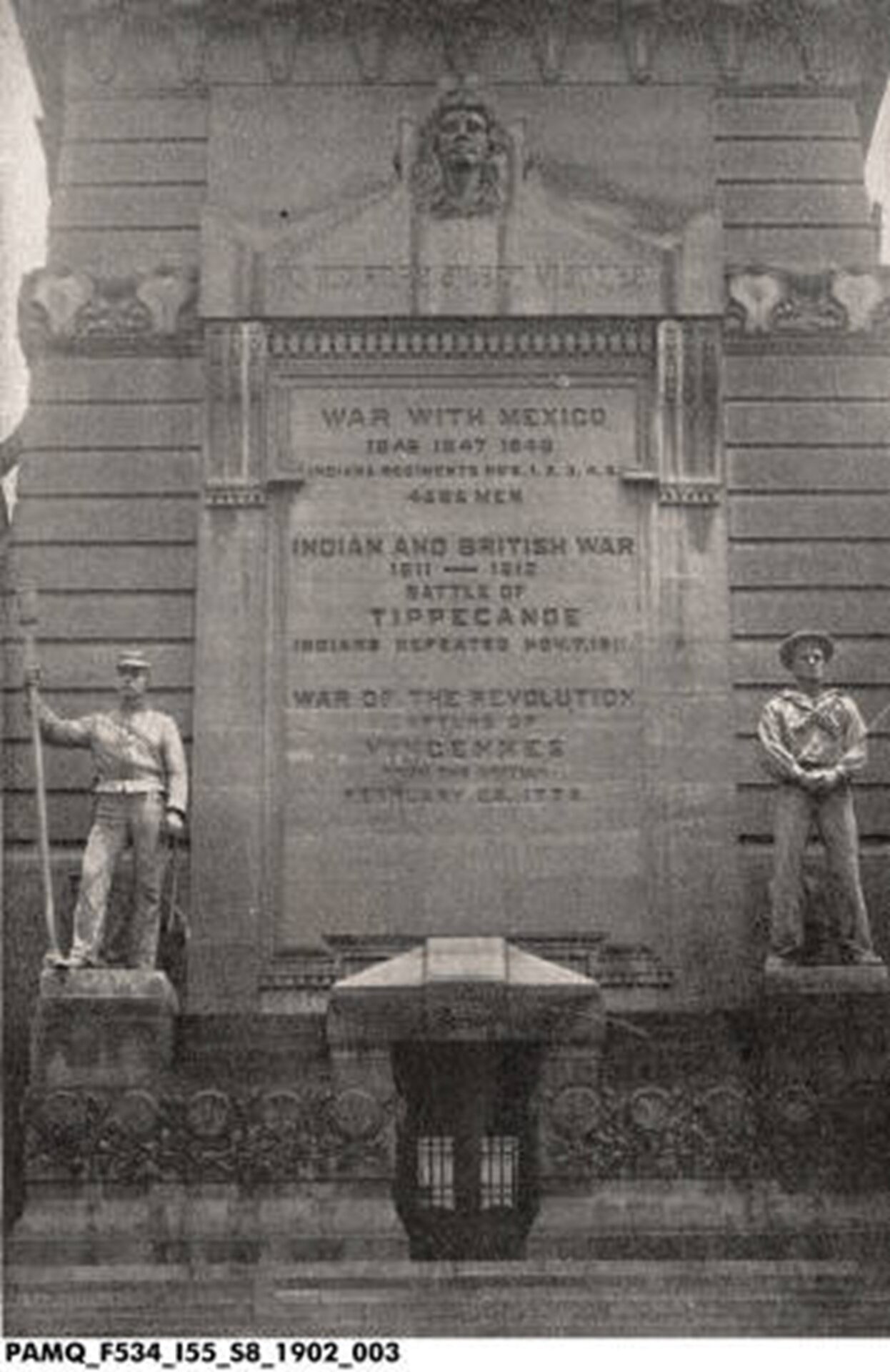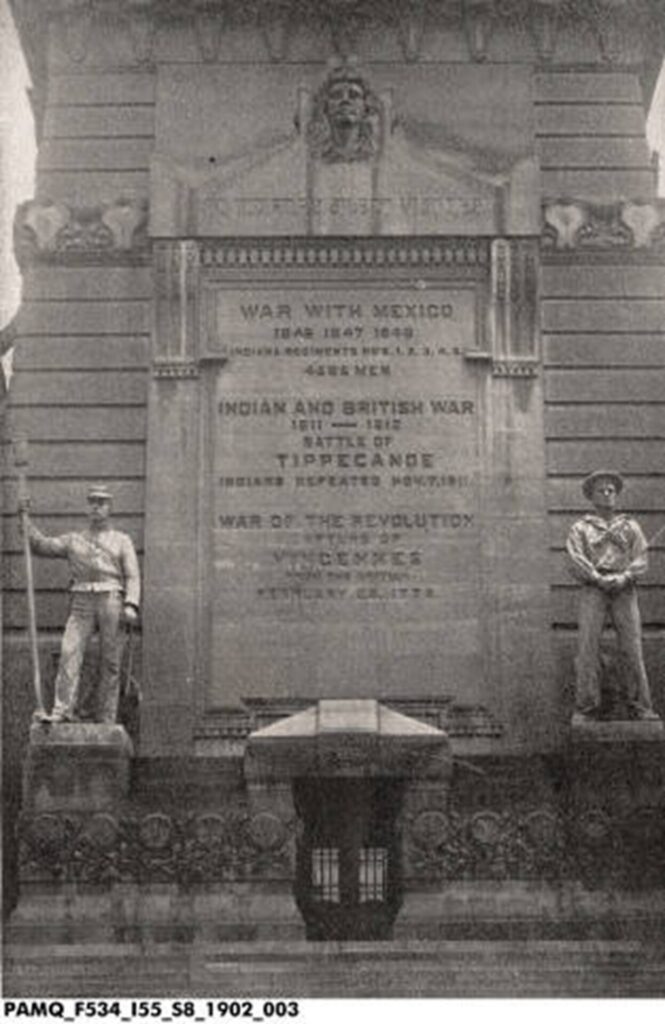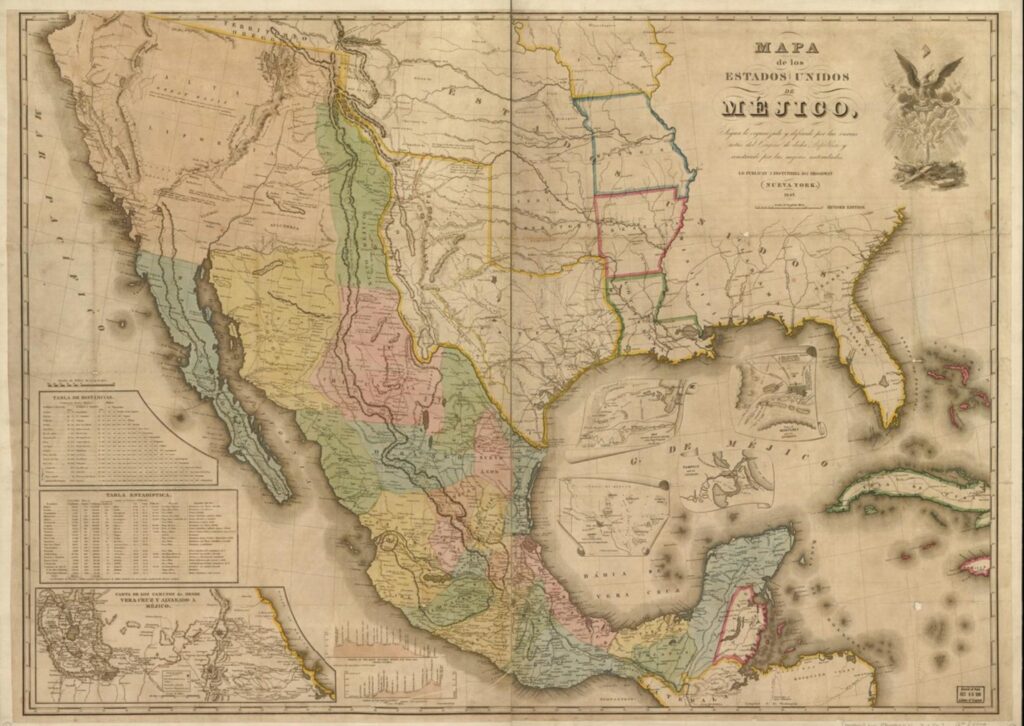
Plan your visit
Why is there a Mexico, Indiana? (And Other Questions Answered)
April 3, 2023

While traveling the State of Indiana during the early days of our multicultural collecting initiative, I would often pass road signs with names of towns that exist in Mexico or other areas of Latin America. I would also find these names while exploring maps of Indiana. Very few are large cities, most are small unincorporated areas and towns. I would mentally file that away as “interesting, but I will look into that later.” But as we all know, while drifting off to sleep, your mind wanders to thinking about the inspiration for towns named Mexico, Jalapa, Vera Cruz and Buena Vista. To be honest, sometimes it kept me up at night. For years I vowed to one day to find the time to fall down that rabbit hole and do the research.
My first logical assumption was that the naming was influenced by the Mexican American War (1846-1848) or the Spanish American War (1898). What I also discovered is that the War of 1812 served as inspiration too. Thinking that I would find about a half dozen names, I ended up with a list of 34 place names. These place names were not only derived from Mexican towns, but the inspiration came from the Caribbean, Central and South America, Spain and Portugal. Typically, Indiana towns and cities are named after or derive from Indiana’s Indigenous population, founders (landowners, war heroes, explorers, etc.), or places in Europe and Asia. Surprisingly there are three “Buena Vista’s” one in Franklin, Gibson, and Randolph Counties as well as two “Cuba’s,” one in Allen County and the other in Owen County. However, most if not all the places in Indiana are named after Mexican cities or towns that were occupied by U.S. forces or served as battle sites in Mexico during the Mexican-American War. Indiana sent volunteer soldiers to Mexico in the summer of 1846. Other names were in empathy of the countries who were amidst their struggle for their independence; Hoosiers would read about them in their local newspaper.
At the end of this blog is a complete 34-place name list, alphabetized with county and additional founding information.

Soldiers Sailors Monument, Tablet with Inscription Dedicated to Indiana Volunteers During the War with Mexico, 1902, Indiana Historical Society.
Mexican American War and The Quest for Westward Expansion
When Indiana became a state in 1816, the border of Mexico was between several hundred to less than a thousand miles away from Indiana. Roughly a third of the western United States was inhabited by indigenous and Spanish-speaking citizens of Mexico. The United States went to war with Mexico from 1846 until 1848, when Mexico ceded 55% of its territory to the United States. This war was initiated by the annexation of the Republic of Texas and resulted in the United States furthering its westward expansion to the Pacific Ocean. After the signing of the Treaty of Guadalupe Hidalgo in 1848, many Mexican citizens were made U.S. citizens overnight. (More about Indiana’s involvement in this war can be found in the September 1919 issue of the Indiana Magazine of History.)

Mapa de los Estados Unidos de Méjico : segun lo organizado y definido por las varias actas del congreso de dicha républica y construido por las mejores autoridades, 1847. Library of Congress Geography and Map Division.
List of Indiana Cities, Towns, and Villages
A
Alamo: Montgomery County, platted in 1837 and named after the Alamo mission in San Antonio, Texas.
Alto: Howard County, platted in 1848 and named after the Battle of Palo Alto of the Mexican War, which is where present-day Brownsville, Texas is located. It originally was an unincorporated area, but now is a neighborhood in Kokomo.
Alvarado: Stuben County, originally called Richland Center. A post office was established in 1855. Probably named for the Mexican city in the state of Veracruz. Presently, it is an unincorporated community.
Avilla: Noble County, a post office was established in 1846 and is currently operating. It is assumed that it is named for Avilla, Spain or the French word “Villa” meaning “small town.”
B
Brazil: Clay County, settled before 1834, founded in 1844 and named for the South American country, which was in the news at the time due to uprisings and revolts.
Buena Vista (Stips Hill): Franklin County, this village was platted in 1848 and named for the Battle of Buena Vista in the Mexican War. This battle was also known as Battle of La Angostura in the Mexican state of Coahuila. The original post office was for Stips Hill, named after Issac Stips, who came to this Franklin County area in 1814.
Buena Vista (Giro): Gibson County, this village was laid out in 1848 and named for this battle of the Mexican War. In 1887 a post office was established and called Giro [see Buena Vista (Stips Hill].
Buena Vista (Cerro Gordo): Randolph County, this village was platted in 1851. The post office was called Cerro Gordo (or Sierra Gordo), a battle in 1847 near Xalapa, Veracruz. Its present name commemorates another battle in the Mexican War. [see Buena Vista (Stips Hill)].
C
Cadiz: Henry County, laid out in 1836 and named for Cadiz, Ohio, where most of its earlier settlers originated from. Its post office was established in 1837. Ultimately the name comes from the Spanish City in the Andalucia region.
Churubusco: Whitely County, formerly two towns were platted here in 1845 (Franklin) and 1855 (Union). In 1870 they were merged to form the town of Churubusco, named after a battle near Mexico City, Mexico during the Mexican American War.
Contreras: Union County, this village was named after a battle, where the Americans claimed victory over the Mexicans in August of 1847. The Battle of Contreras was also known as Battle of Padierna which was in Mexico City, Mexico.
Cuba: Allen County, this unincorporated area was laid out as a village in 1855 and named after the Caribbean Island nation.
Cuba (Santa Fe): Owen County, this village was laid out in 1851, originally called Santa Fe. Its post office was established in 1851 and closed in 1909. It was also named after the Caribbean Island nation.
Cuzco: Dubois County, this unincorporated area was platted as a village in 1905 and originally called Union Valley, because the residents were opposed to slavery. Its post office was established in 1902 and closed in 1955. It is named after the South American city Cusco in the nation of Peru.
D
DeSoto: Delaware County, this village was platted in 1881 and originally named Woodlawn. Another town in Allen County was also named Woodlawn, which caused confusion. The name was changed to DeSoto after Spanish Conquistador – Hernan de Soto.
H
Honduras: Adams County, this village had a post office named after this Central American country in 1890, which closed in 1904.
J
Jalapa: Grant County, this unincorporated area was laid out as a village in 1849. The post office was originally named Dallas from 1848-1849. Later it was renamed Jalapa after Xalapa, (Jalapa) Veracruz in Mexico which was the location of the battle of Cerro Gordo of the Mexican-American War.
L
Lapaz or LaPaz: Marshall County, this town was laid out in 1873. It is believed to be named after the capital of Bolivia or La Paz in the State of Mexico. The current spelling was adopted in 1893.
Lapaz Junction: Marshall County, this town was established in 1876, about a mile east of Lapaz at a railroad junction. It was served by the Chicago line of the B&O Railroad, now known as CSX.
Lisbon: Noble County, this unincorporated area was laid out as a village in 1847. A post office was established in 1849 and closed in 1919. It was named after the capital city of Portugal.
M
Matamoras: Blackford County, this unincorporated community was organized as a village 1875. Named after the Mexican city Matamoros in the state of Tamaulipas. This Mexican city was the site of the Mexican American War and saw action during the Mexican War of Independence, The Texas Revolution, The French Intervention, and the U.S. Civil War.
Mexico: Miami County, this town was laid out in 1834 and named after Mexico, inspired by their struggle for independence from Spain in 1821. Its post office was established in 1837.
Monterey: Pulaski County, this town was officially platted in 1849 as Buena Vista. Prior to this was known as the DeMoss settlement. The name was changed to Monterey in 1852. It was named after the Battle of Monterrey during the Mexican American war. This city is in the Mexican state of Nuevo Leon.
Montezuma: Parke County, settled in 1821, post office established in 1825 and platted in 1849. This town was named by the early settlers after the indigenous Emperor Moctezuma II of the Aztec Empire (present day Mexico).
N
Nevada: Tipton County, this unincorporated area was laid out as a village in 1852 and named after the mountain ranges in the territory which gained its independence from Spain in 1821 and ceded from Mexico in 1848. It is near the city of Kokomo.
Nevada Mills: Steuben County, originally called Millville due to numerous local sawmills. A landowner who previously lived in Nevada during the Gold Rush (1849), suggested the new town name of Nevada. In 1867 the post office was established and added the word “Mills” to distinguish it from the other Indiana town named Nevada in Tipton County.
New Santa Fe: Miami County, this unincorporated area was platted as a village in 1902. It was named after another Indiana town called Santa Fe in Miami County.
P
Peru: Miami County, the land was purchased from Chief Richardville of the Miami tribe in 1827, approved by the President in 1828, and laid out in 1829 as Miamisport. In 1834, Peru was founded near Miamisport and later absorbed that area. It is named after the South American country, which during the 1830s was fighting for its independence from Spain.
S
Saltillo: Washington County, this town was platted in 1849 and named after the Mexican city in the state of Coahuila. The Battle of Saltillo during the Mexican American War happened on October 25, 1840. It established a post office in 1854 and it closed in 1957.
San Jacinto: Jennings County, an unincorporated area, their post office was established in 1852 and closed in 1906. It is presumed to be named after the San Jacinto River in present day Texas, in which Sam Houston, father of the Texas Revolution, defeated Mexico’s General Santa Anna in 1836, gaining its independence. Initially known as The Republic of Texas, it was later recognized by the United States in 1837 and added to the union as a state in 1845.
Santa Fe: Miami County, this village was platted in 1845 and initially known as Old Santa Fe to differentiate itself from New Santa Fe in the same county. Likely named after the Battle of Santa Fe or The Capture of Santa Fe during the Mexican American War in August of 1846.
T
Tampico: Jackson County, an unincorporated area that was founded in 1840 by blacksmith who built a shop there. A post office was established in 1852 and closed in 1909. Named after a Mexican seaport in the state of Tamaulipas.
V
Valparaiso: Porter County, this city was platted in 1836, originally as Portersville. Named after Captain David Porter, of whom the county is named after. Captain Porter fought the British in the War of 1812. During this war, a U.S. Naval ship named the U.S.S. Essex was captured off the coast of Chile during the Battle of Valparaiso, where Captain Porter fought a poignant battle. Portersville was renamed Valparaiso in 1837.
Vera Cruz: Wells County, this town was laid out in 1848. Its original name was Newville. Since there was another city by the same name in a different county, the name was changed to Vera Cruz. Its post office was established in 1850 and closed in 1942. It was named after Veracruz, the Mexican port city that was occupied by American soldiers in 1847 during the Mexican American War.









